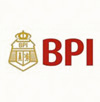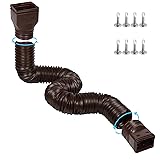All Categories
Aeronautical Applications of Non-destructive Testing
Share Tweet
*Price and Stocks may change without prior notice
*Packaging of actual item may differ from photo shown
- Electrical items MAY be 110 volts.
- 7 Day Return Policy
- All products are genuine and original








About Aeronautical Applications Of Non-destructive Testing
Product Description Comprehensive guide to the basic principles and applications of non-destructive testing methods for aircraft system and components: airframe, propulsion, landing gear and more Provides detailed analysis of the advantages and disadvantages of major NDT methods Important for design, inspection, maintenance, repair, corrosion protection and safety This critical book is among the first to provide a detailed assessment of non-destructive testing methods for the many materials and thousands of parts in aircraft. It describes a wide variety of NDT techniques and explains their application in the evaluation and inspection of aerospace materials and components ranging from the entire airframe to systems and subsystems. At the same time the book offers guidance on the information derived from each NDT method and its relation to aircraft design, repair, maintenance and overall safety. The book covers basic principles, as well as practical details of instrumentation, procedures and operational results with a full discussion of each method's capabilities and limitations as these pertain to aircraft inspection and different types of materials, e.g., composites and metal alloys. Technologies covered include: optical and enhanced optical methods; liquid penetrant, replication and magnetic particle inspection; electromagnetic and eddy current approaches; acoustics and ultrasonic techniques; infrared thermal imaging; and radiographic methods. A final section is devoted to NDT reliability and ways the probability of detection can be measured to establish inspection intervals. Review Non-destructive Testing (NDT) well-known as an integral part of the through-life operation of all modern aircraft. Indeed, NDT is also interwoven with current design and manufacturing philosophies. I was therefore delighted to see that this extremely important topic is now covered by a 477 page book. Firstly, the book sets the context in which NDT is used by the aerospace industry and explains design philosophies such as the concepts of damage tolerance and inspection intervals. This is important as it explains why NDT is needed and how it fits into the aerospace industry. The book then goes on to delve into the core NDT methods, such as ultrasonics, theromography and eddy currents. This is a daunting breadth of subject matter as NDT is very much an interdisciplinary subject. It means that these technique chapters can only really serve an introductions to these topics which each warrant books in their own right. Understandably then some technical subtleties and things like new techniques are glossed over. However, the really nice aspects of these chapters are the real-world practical examples, which come from the author s own experience. I can see these examples being of significant use to readers who already have an NDT background in a different sector. They would also be useful for engineering students or practicing engineers who need to understand this application. Having viewed NDT from a technique perspective, the book then changes tack and considers two particular aerospace application challenges: detection of corrosion in aluminium structures and the inspection of composite materials. The book then concludes with a comprehensive chapter describing how the performance of NDT is measured, a critical yet overlooked subject that is very clearly described here. In summary, this is a welcome book on NDT in aerospace. It is jam-packed with numerous 18 The Aeronautical Journal January 2017 real-world examples and has nice chapters that consider the big picture of why NDT is performed. Reviewed by Professor Bruce W Drinkwater, Department of Mechanical Engineering, University of Bristol --The Aeronatical Journal, January 2017 From the Inside Flap This critical book is among the first to provide a detailed assessment of non-destructive testing methods for the many materials and thousands of parts in aircraft. It describes a wide variety of



























